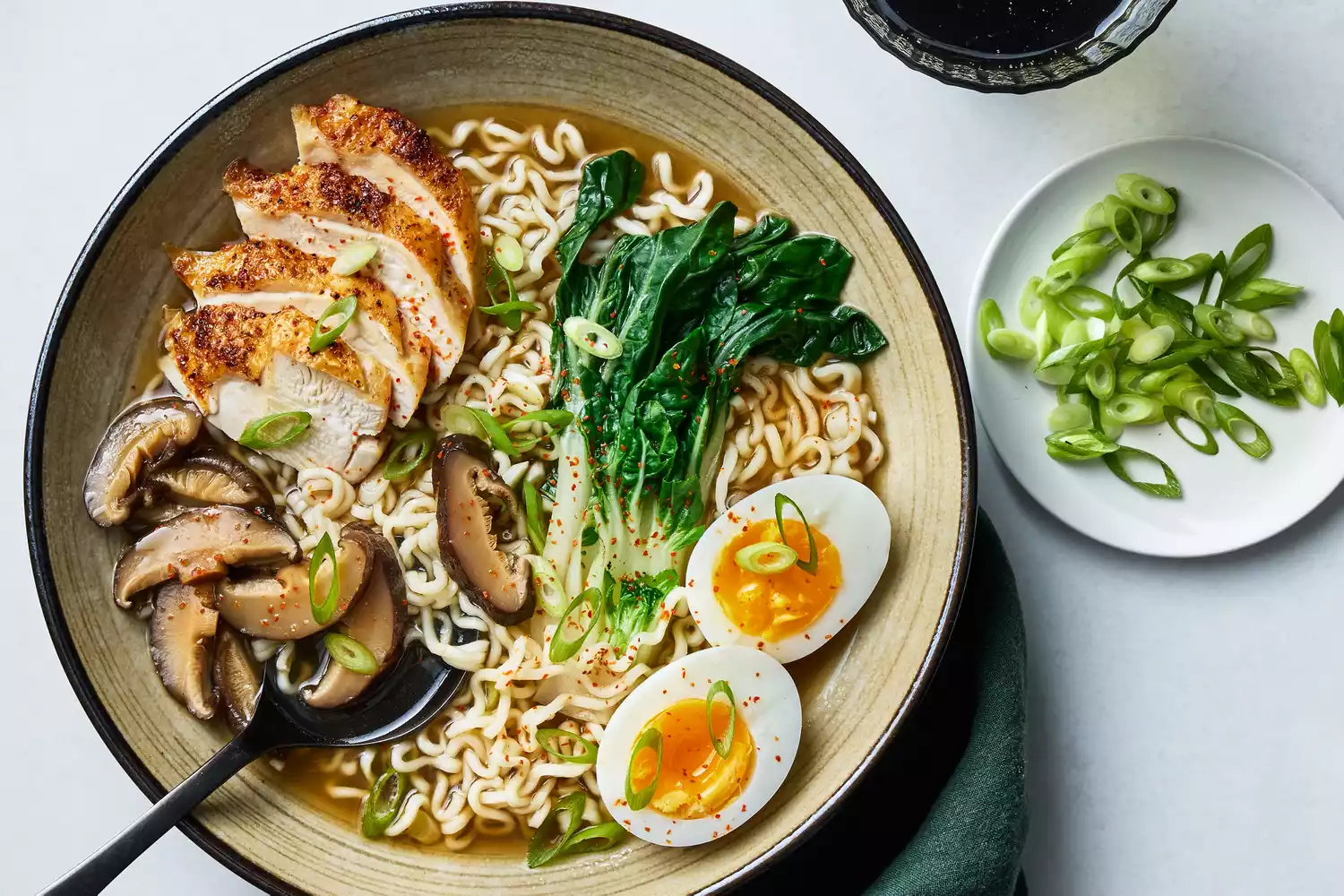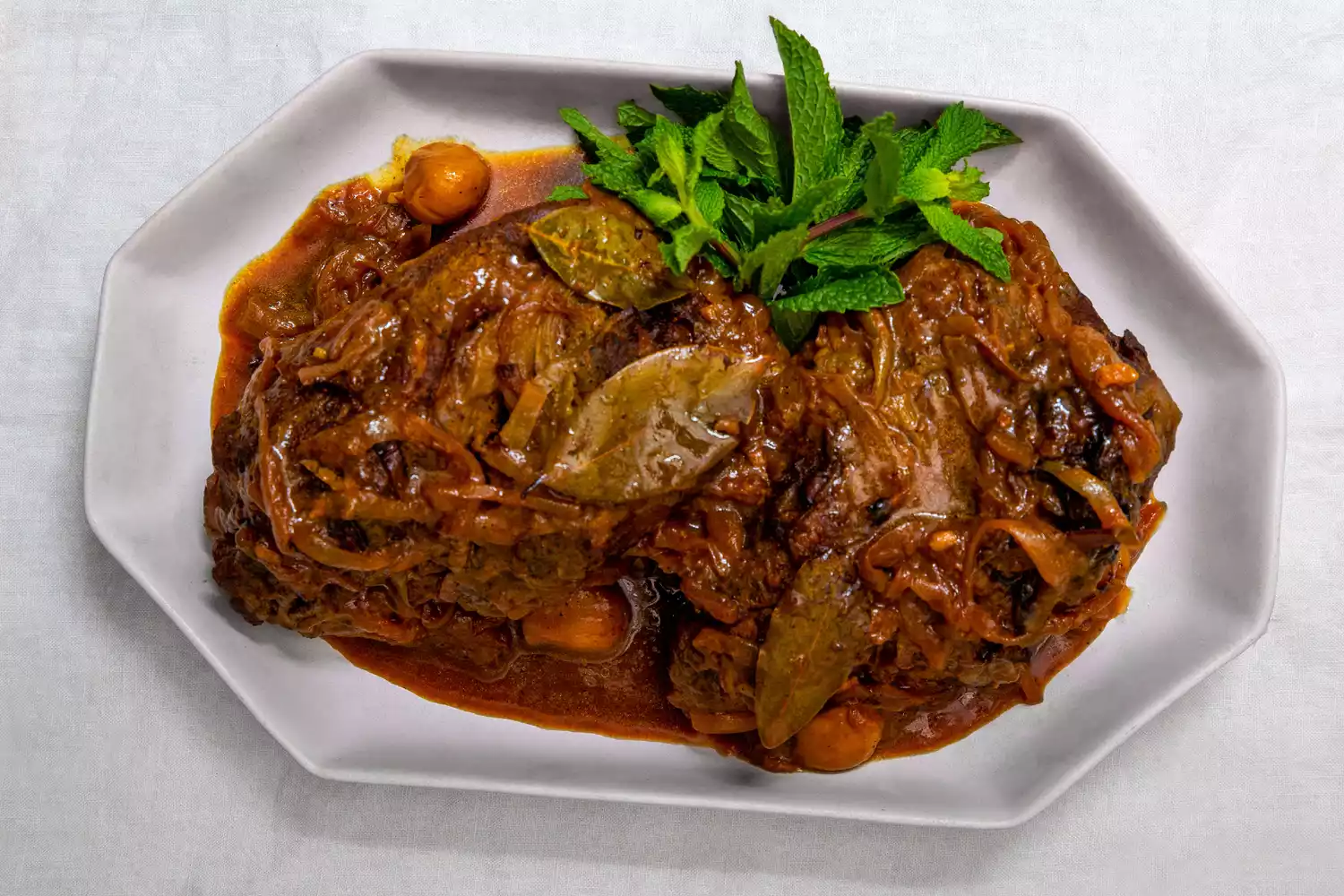Advertisement
Poultry Noodle Dish

Mastering Homemade Chicken Ramen: A Flavorful Culinary Journey
Cooking Time and Preparation
Total Time: 1 hour
Servings: 2 Ingredients
Broth Ingredients
- 8 cups low-sodium chicken stock
- 1 cup water
- 2 cups dried shiitake mushrooms, thoroughly washed
- 1 cup diced onions
- 1 piece (2 inches) kombu seaweed
- 4 garlic cloves, thinly sliced
- 1/2-inch piece of fresh ginger, peeled
- 3 tablespoons shoyu (or soy sauce as an alternative)
Chicken Ingredients
- 2 chicken breasts with skin (approximately 8 ounces each)
- 1 tablespoon togarashi or gochugaru (Korean chili flakes)
- 1 teaspoon kosher salt
- 1/4 teaspoon freshly ground black pepper
- 2 tablespoons olive oil
Serving Ingredients
- 2 large eggs
- 2 packs of ramen noodles (4 ounces fresh or 3 ounces dried, each)
- 4 ounces gai lan (Chinese broccoli) or baby bok choy
- 2 tablespoons toasted sesame oil
- Sliced scallions for garnish
Preparation Steps
Creating the Flavorful Broth
Start by bringing the chicken stock, water, dried mushrooms, diced onions, kombu, garlic, and ginger to a rolling boil in a large saucepan over medium-high heat. Once boiling, lower the heat to maintain a gentle simmer, and allow the mixture to cook for 30 minutes, stirring occasionally.
Chicken Seasoning and Cooking
While the broth simmers, season the chicken breasts with togarashi or gochugaru. Let them rest for about 15 minutes to absorb the flavors. Meanwhile, boil 1/2 quarts of water in a separate medium saucepan. Once the water reaches a boil, gently add the eggs and let them cook for exactly 6 ½ minutes. Remove the eggs from the boiling water (without draining the pot) and immediately transfer them to a bowl filled with ice water to halt the cooking. Allow them to cool before peeling and setting aside.
Cooking the Chicken
In a medium cast iron skillet, heat the olive oil over medium heat. Add the seasoned chicken, placing it skin-side down in the skillet. Cook for 4 to 6 minutes on each side until the chicken reaches an internal temperature of 165°F, turning it only once for even cooking. Allow the chicken to rest for 5 minutes before slicing it into thin pieces.
Finalizing the Broth
Strain the broth using a fine mesh sieve, ensuring you extract as much liquid as possible from the shiitake mushrooms. Set the mushrooms aside on a plate to cool down. Once cool, remove the stems and slice the mushrooms thinly. Return the strained broth to the saucepan, stir in the shoyu, and add more salt if needed.
Preparing the Ramen
Cook the ramen noodles according to the package instructions in the pot of boiling water. Drain and set aside when done.
Serving Your Dish
To assemble, place 1 cup of cooked ramen noodles into warmed bowls. Top each bowl with the sliced shiitake mushrooms, chopped scallions, pieces of chicken breast, and a soft-boiled egg. Finally, pour 1/2 cups of hot broth over each serving and drizzle with sesame oil to enhance the flavor.
Tips for Optimal Flavor
For an authentic taste, serve your ramen hot. To do this, pre-warm your serving bowls by pouring in the hot broth before assembling the ramen and then returning the broth to the pot.
Keep in mind that your flavorful broth can be refrigerated for up to a week or frozen for up to three months, making it perfect for meal prep!
Extra Insights
Understanding Kombu
Kombu is a type of dried sea kelp essential in Japanese cuisine, often used to create dashi and ramen broth. It’s a key ingredient that imparts umami flavor, known as the fifth taste, thanks to its natural glutamic salts. You can easily find it in grocery stores alongside other dried seaweeds, especially in Asian markets.
The Shoyu Advantage
Shoyu refers to Japanese-style soy sauces made from fermented soybeans, wheat, salt, and water. It provides a unique flavor profile distinct from regular soy sauce, enhancing the depth of your ramen broth.
Keeping It Hot
It's crucial for ramen to be served piping hot. Traditionally, the serving bowls are warmed by pouring in the boiling broth momentarily before returning it to the pot to maintain both the bowl's warmth and the broth's temperature.
Enjoy your homemade ramen adventure!


